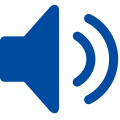Body System
cardiovascular system

car·di·o·vas·cu·lar sys·tem
Subclass of:
Anatomy (MeSH Category)
Definitions related to cardiovascular system:
-
(circulatory system) The system that contains the heart and the blood vessels and moves blood throughout the body. This system helps tissues get enough oxygen and nutrients, and it helps them get rid of waste products. The lymph system, which connects with the blood system, is often considered part of the circulatory system.NCI Dictionary of Cancer TermsU.S. National Cancer Institute, 2021
-
A collection of organs including the heart and the blood vessels.CDISC TerminologyClinical Data Interchange Standards Consortium (CDISC), 2021
-
Bodily system consisting of the heart, blood vessels, and blood that circulates blood throughout the body, delivers nutrients and other essential materials to cells, and removes waste products.CRISP ThesaurusNational Institutes of Health, 2006
-
Organ system which consists of heart, systemic and pulmonary arterial and trees, and lymphatic and portal venous trees and body substance contained within.Foundational Model of AnatomyUniversity of Washington, 2017
-
Relating to the heart and the blood vessels or the circulation.NCI ThesaurusU.S. National Cancer Institute, 2021
-
The HEART and the BLOOD VESSELS by which BLOOD is pumped and circulated through the body.NLM Medical Subject HeadingsU.S. National Library of Medicine, 2021
-
The cardiovascular system consists of the heart, which is an anatomical pump, with its intricate conduits (arteries, veins, and capillaries) that traverse the whole human body carrying blood. The blood contains oxygen, nutrients, wastes, and immune and other functional cells that help provide for homeostasis and basic functions of human...WebMD, 2019
-
Human cardiovascular system, organ system that conveys blood through vessels to and from all parts of the body, carrying nutrients and oxygen to tissues and removing carbon dioxide and other wastes. It is a closed tubular system in which the blood is propelled by a muscular heart. Two circuits, the...Encyclopedia Britannica, Inc., 2020
-
Circulatory system, system that transports nutrients, respiratory gases, and metabolic products throughout a living organism, permitting integration among the various tissues. The process of circulation includes the intake of metabolic materials, the conveyance of these materials throughout the...Encyclopedia Britannica, Inc., 2020
Return to OpenMD Medical Dictionary
> C
This content should not be used in place of medically-reviewed decision support reference material or professional medical advice. Some terms may have alternate or updated definitions not reflected in this set. The definitions on this page should not be considered complete or up to date.